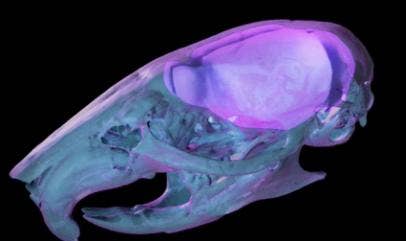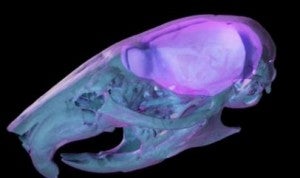Take a Virtual Trip Through The Brain of a Mouse

Share

University of California San Diego is organizing a collectively-created visual model of the mouse brain. Open up, Mickey, it's time to see what's inside.
It may sound like the premise for the next roller coaster ride at Disney Land, but UC San Diego is serious about letting you take a virtual voyage through the brain of a mouse. Their new open source resource, called the Whole Brain Catalog, allows scientists to navigate through a visual model of a mouse brain. Not only that, but each research team can also upload their latest results helping to improve the accuracy of the WBC overtime. UCSD hopes that their new creation will prove to be a valuable utility for scientists all over the world. Watch a brief demo of the catalog in the video after the break.
Much like MIT's Registry for Standard Biological Parts, or even Google Earth, the Whole Brain Catalog hopes to build off of collective knowledge. Individual research groups contributing to a central repository of information is going to change the way the scientific community works. In the short term, teams around the world will have access to a visual model of the brain that is used most often in their labs. In the long term, the success of WBC could help usher in a new era of the rapid exchange of scientific information. The quicker that researchers can share their results, the faster other teams can benefit from them, and the sooner we will all enjoy the technological innovations they create.
Be Part of the Future
Sign up to receive top stories about groundbreaking technologies and visionary thinkers from SingularityHub.


The video tour you just watched is a cool visual trek, but it doesn't really highlight all of the capabilities that the Whole Brain Catalog will contain. Yes, the resource will be multi-scale, letting you explore the brain as a whole, or in components right down to the subcellular level. Just as importantly though, it will be open source, and downloadable - giving researchers easy access and a chance to edit its contents. Those contents will be searchable, so that you can type in "hypothalamus" and jump straight to that portion of the mouse brain.
Rather amazingly, the WBC will be at such high resolution that it will be able to simulate neural connections. By building off the scientific results of various teams around the world, these simulations could help form a highly accurate model of a functioning mammalian brain. No small feat.
The WBC shares some ultimate goals of human brain simulators like the Blue Brain Project. Mouse brains, however, offer some unique advantages. They are simpler, more easily explored, and researchers in many countries have a shared standard by which they are examined and discussed. Eventually, the information included in the Whole Brain Catalog could make it a unique resource for neurological studies, made all the more special and powerful by its open source nature. It's much too early to tell if UC San Diego's attempt will ultimately be successful, but I wish it luck. And if Disney wants to start on making an associated ride, I have some ideas already: 3D Neuron Laser Tag. It'll be amazing, trust me.
Screen capture and video credit: Whole Brain Catalog
Related Articles

Study: AI Chatbots Choose Friends Just Like Humans Do

AI Companies Are Betting Billions on AI Scaling Laws. Will Their Wager Pay Off?

Are Animals and AI Conscious? Scientists Devise New Theories for How to Test This
What we’re reading